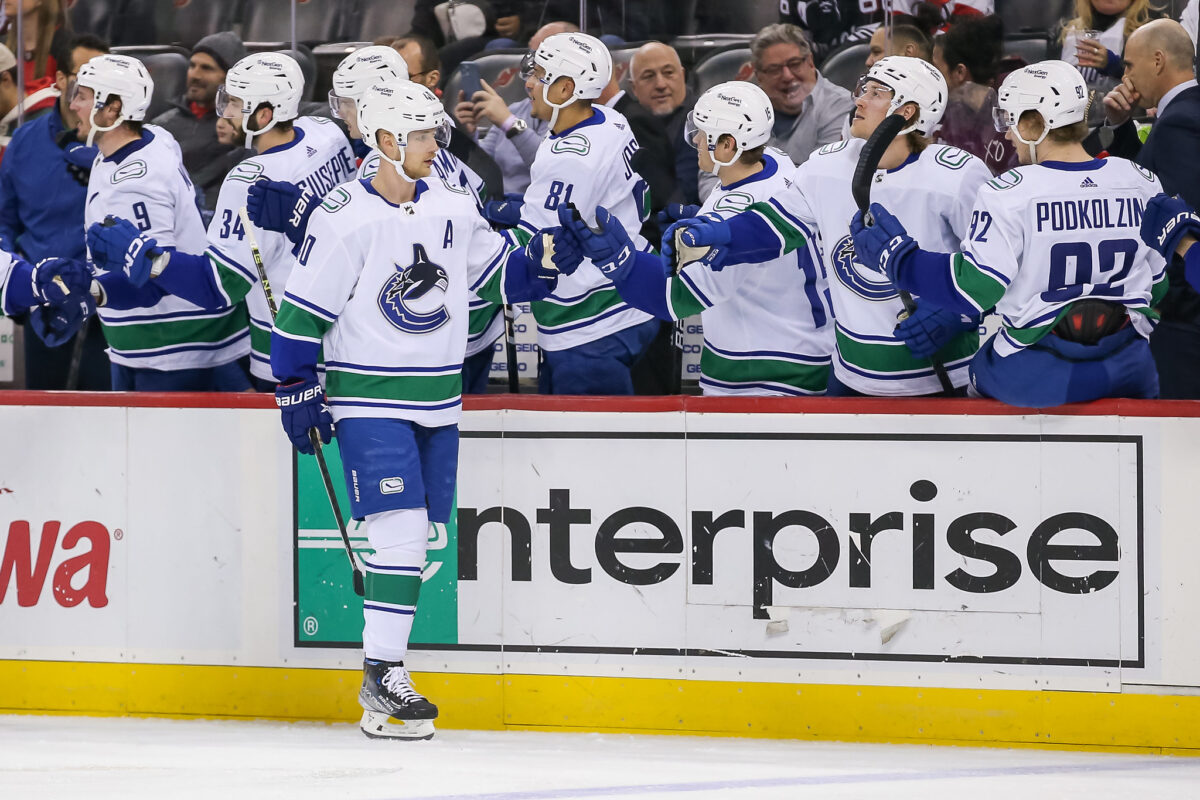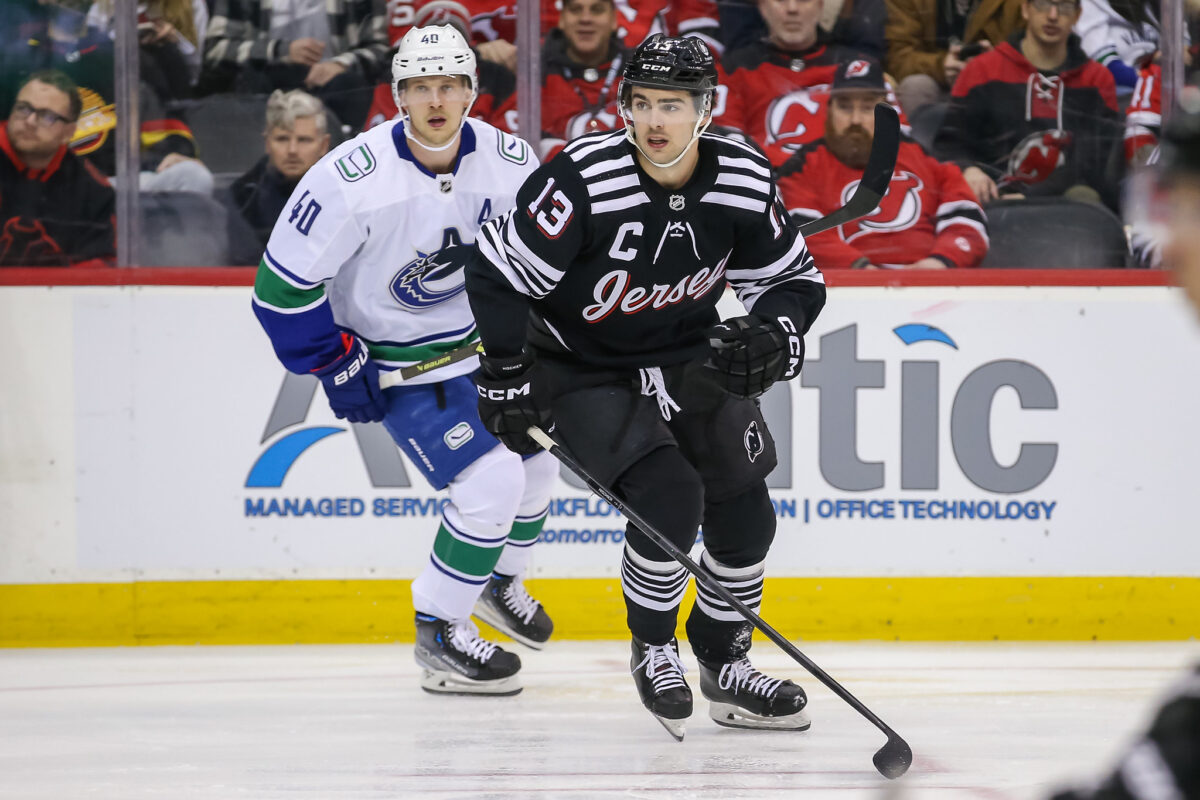A European superstar centre signed a reasonable, eight-year contract extension last week, and unfortunately for Vancouver Canucks fans, it wasn’t Elias Pettersson. Sebastian Aho’s eight-year, $78 million contract sparked discussion throughout the Vancouver fanbase. Many on social media began dimming their hopes of Pettersson signing a contract with an average annual value (AAV) below $10 million. However, many correctly pointed out the similarities between the two and how Aho’s contract is a good comparison for the Canucks phenom.
Aho’s contract will carry an AAV of $9.75 million once the 2024-25 season starts, which is a good baseline for conceptualizing a Pettersson contract. Both forwards are first-line, play-driving centres that should enter the Selke Trophy conversation in the coming years. While Aho has more team success with the Carolina Hurricanes, Pettersson is arguably a better player. He will command a higher AAV, assuming he signs for a similar length, but how much more should he come in at?
Comparing Pettersson & Aho’s 2022-23 Season
Pettersson and Aho are similar in many ways. As mentioned, both are point-per-game (P/G) first-line centres, capable of driving play while having fantastic defensive metrics. Of course, there are differences, primarily Pettersson’s higher-end offensive capabilities, but both play similar roles for their teams.

Pettersson emerged as a superstar during the 2022-23 NHL season. He surpassed the 100-point mark for the first time in his career, scoring 102 points (39 goals, 63 assists) in 80 games. Additionally, he drew 74 minutes in penalties to only 14 minutes taken, had a Corsi For of 56 percent, and finished seventh in Selke Trophy voting. It was a matter of when, not if, for Pettersson’s emergence as a superstar in the NHL, but his stellar defence elevated his status from a consensus top-15 centre in the league to arguably top-five.
Despite Pettersson’s poor percentage in the faceoff dot (44.3%), his 56 takeaways, 89 blocked shots, shots against per 60 of 27.3 and the Canucks outscoring opponents while he was on the ice aided his Selke bid, among other stats. He was one of the lone defensive bright spots on a Canucks team that struggled defensively in 2022-23.
Aho is also a defensively responsible centre with a point-per-game ability, which makes him a perfect comparable for Pettersson. Using JFresh’s model above, we see that Aho is also an above-average defender when using wins-above-replacement (WAR). He ranks in the 63rd percentile for five-on-five defence while providing exceptional defence on the penalty kill over the last three seasons. To go along with this data, he had 63 takeaways, won 51.4% of his faceoffs, had a 63 percent Corsi For, and finished 28th in Selke voting last season. While his scoring did dip this past season – 36 goals and 31 assists for 67 points in 75 games – it was the first time he was below a P/G pace since the 2019-20 season. He is a remarkably consistent offensive and defensive force.
Related: Canucks Top-15 Prospects Heading Into the 2023-24 Season
Pettersson’s WAR from JFresh’s model places him in the 75th percentile over a three-year span for five-on-five defence, but he finished in the 90s during the 2022-23 season. They both possess a similar defensive skill set and are consistent point-per-game threats. Pettersson’s ability to reach the 100-point threshold will make his contract extension more lucrative. Still, their comparable production on both ends of the ice makes Aho a strong comparison for the Super Swede.
Pettersson Should Come In Higher Than Aho
Pettersson’s contract extension will come in higher than Aho’s. It would be shocking if it didn’t; this is for multiple reasons. Firstly, he is 15 months younger. Locking up the 24-year-old, who would be 25 once his hypothetical extension kicks in, for eight years, ensures his best years of hockey will be spent in a Canucks uniform, barring a trade. Aho’s contract extension will take him into his early-to-mid 30s. While the likelihood of his contract souring in the later years is low, the added age adds risk, keeping the cost slightly down.

Aside from Pettersson’s age being a primary factor in his likely higher cap hit, he is also the better player for where he is in his career compared to Aho. In 520 career games, Aho has 468 points, good for 0.9 P/G. Pettersson has 323 points in 325 games, a 0.99 P/G. Shrinking the sample size to the last two seasons for a better comparison exemplifies this more, as Pettersson has a 1.06 P/G average versus Aho’s 0.96.
Pointing out these stats isn’t to diminish Aho in any way. He deserves every penny of his contract extension. Instead, it points out how Pettersson’s AAV will be higher than his, in all likelihood. Aho’s contract should serve as a baseline for Pettersson. An eight-year deal in the $10.5-11.5 million range is the sweet spot, even with the expected cap jump next summer.
Pettersson Will Be Expensive
Pettersson has shown greater flashes of offensive and defensive production at a younger age. It’s unfair to pin the lack of team success on his shoulders, considering the mismanagement of the Canucks during his time with the team. While Aho has two Eastern Conference Final appearances under his belt, albeit getting swept in both, the Hurricanes are leagues ahead of the Canucks regarding roster construction and cap management. General manager Patrik Allvin should do everything possible to sign Pettersson this summer. If he produces another 100-point, top-ten Selke-level season, his AAV may sneak into the $12-13 million range come the 2024 offseason.
With the salary cap expected to jump significantly in the coming years, Aho’s deal will become one of the NHL’s best in short order. For Pettersson, any number in the $10 million range will bring great value, especially at eight years. Of course, that is something he also has to reciprocate interest in; however, it is hard for anyone to pass up $80-plus million guaranteed over eight years. When his contract expires next summer, he will be a restricted free agent (RFA), giving the Canucks some contractual security if he doesn’t re-sign before next offseason. He will command a hefty salary, but assuming it doesn’t eclipse the $12.5 million range, it should become one of the best contracts in the NHL in a few seasons.
Advanced stats were taken from Money Puck